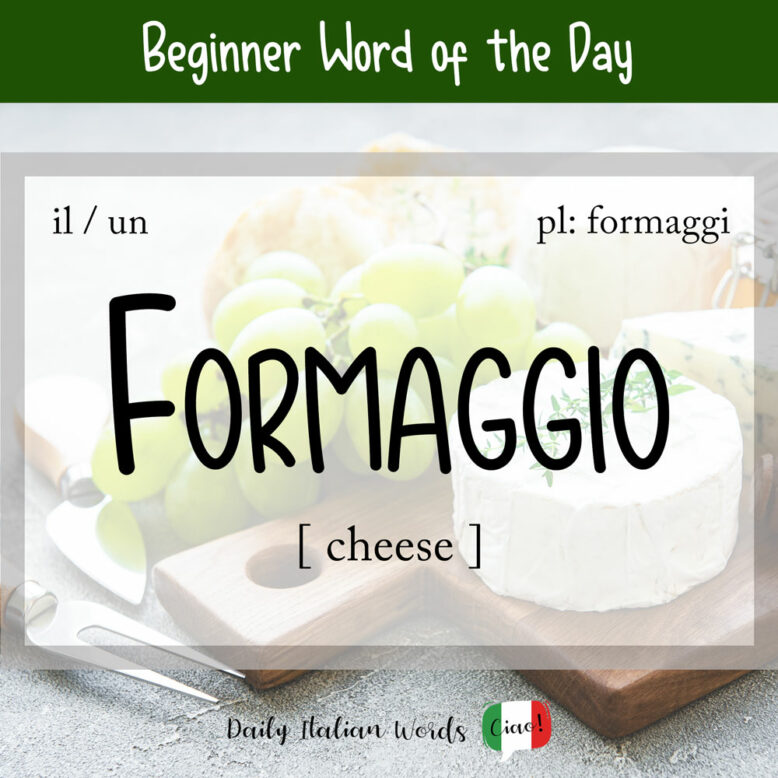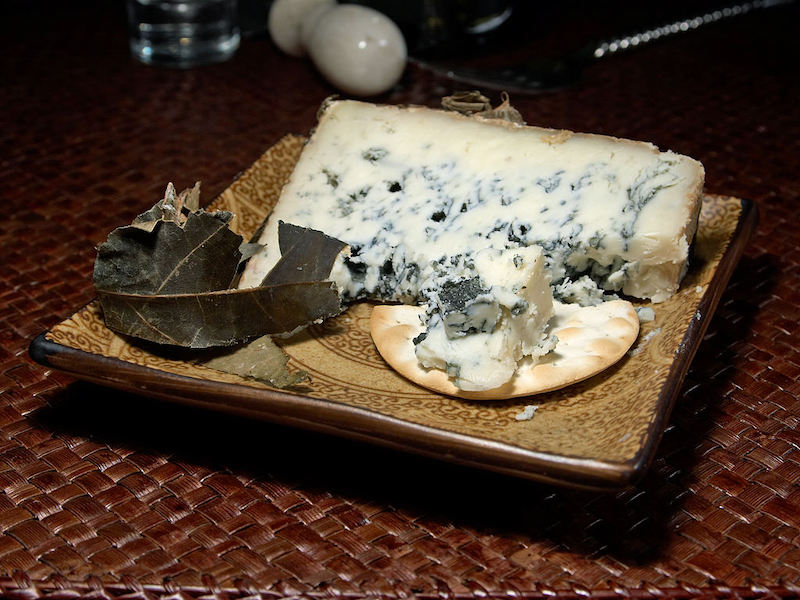It is difficult to imagine Italy without conjuring up images of pane (bread), vino (wine), pasta, pizza, and of course, cheese.
The generic word for cheese in Italian is formaggio (masculine, plural: formaggi) and as everyone knows, many of the most famous cheeses in the world originate from Italy. In fact, it is estimated that there are approximately 400 different varieties!

Some formaggi are soft (morbidi) and sweet (dolci) while others tend to be hard (duri) and salty (salati). Although many form the principal ingredient in Italian dishes, an equal number can be enjoyed on their own as a small side dish. Let’s take a look at some of the most well-known types:
- Parmigiano-Reggiano: Originated in the Emilia-Romagna region and produced using cow’s milk. Used in most Italian dishes including pasta, pizza, risotto, soups, salads, and more. Salty and nutty in flavour.
- Mozzarella di Bufala: Originated in Naples and produced using water buffalo milk. Often served with basil leaves, tomato, anchovies and crusty bread. Sweet and buttery in flavour. Used on certain pizzas too.
- Fontina D’Aosta: Made using the milk of Valdostana cows in the Valle d’Aosta. Often eaten on its own. The cheese of choice for the Piedmontese dish fonduta (fondue).
- Gorgonzola: Originated in the Lombardy region and produced using cow’s milk. Starts out soft and gooey but hardens with age. Speckled with blue mould that gives it a strong smell and flavour. Used for pasta, pizza and salad and often accompanied by pears and figs as a dessert cheese.
- Pecorino Toscano: Originated in Tuscany and produced using sheep’s milk. An oily aromatic cheese that goes well with salad, olives and prosciutto.
- Provolone: Originated in Basilicata and produced using cow’s milk. An aged pasta filata (stretched-curd) cheese with flavours varying from smoky to sharp and spicy. Often eaten on its own or in sandwiches.

Io prendo una margherita, grazie. – Margherita normale o con (mozzarella di) bufala signore? – La seconda che ha detto, adoro la mozzarella di bufala!
I’ll take a margherita, thanks. – A normal margherita or with bufalo mozzarella sir? – The second, I love bufala mozzarella!
Others you may have heard of include robiola, asiago, taleggio, ricotta, burrata, mascarpone, stracciatella, scamorza, and grana padano. If you’re interested in deepening your knowledge about Italian formaggi, this helpful visual guide tells you all about the flavour, ageing process and use of each cheese on this list.
When small pieces of cheese are sold in packages in a supermarket, they are called formaggini (small cheeses).
Ricordati di prendere anche quella scatola di formaggini che piacciono tanto alla nonna!
Remember to pick up that box of small cheeses that your grandma loves so much.

You may have come across the Italian idiom essere come un topo nel formaggio (to be like a mouse in cheese). The English equivalent of this saying is as happy as a clam or as happy as a pig in mud.
Heather Broster is a graduate with honours in linguistics from the University of Western Ontario. She is an aspiring polyglot, proficient in English and Italian, as well as Japanese, Welsh, and French to varying degrees of fluency. Originally from Toronto, Heather has resided in various countries, notably Italy for a period of six years. Her primary focus lies in the fields of language acquisition, education, and bilingual instruction.


